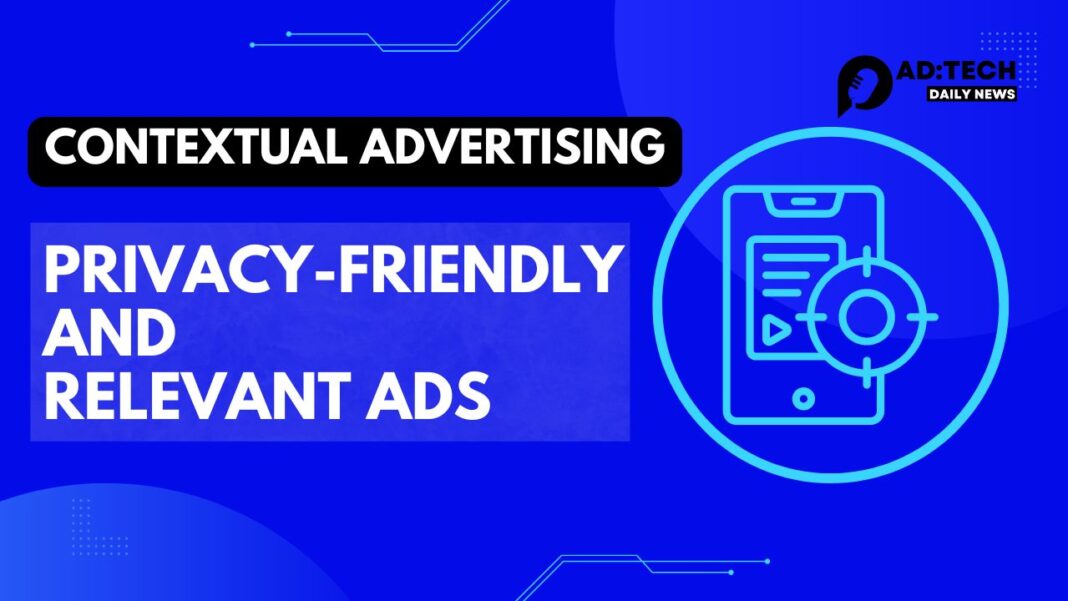Ad tech companies are leading a transformation in the digital advertising space by embracing contextual advertising. This method allows advertisers to place ads based on the content of the webpage or the context in which the user is browsing, rather than relying on behavioral data. As privacy concerns rise and cookies are phased out, contextual advertising is emerging as a powerful, privacy-friendly alternative. This article delves into how ad tech companies are innovating with contextual advertising, exploring its benefits, challenges, and real-world applications.
Table of Contents
Introduction to Contextual Advertising
Contextual advertising refers to the practice of displaying ads that are relevant to the content a user is currently viewing. Unlike traditional advertising, which often relies on user behavior tracking, contextual ads match the environment in which they are displayed. For instance, an article about travel might feature ads for airlines, hotels, or travel insurance, making the advertisement more relevant and timely for the user.
Why Contextual Advertising Matters in Today’s Ad Tech Ecosystem
With the growing emphasis on user privacy, contextual advertising has gained traction as an effective and compliant way to reach target audiences. Traditional behavioral advertising has been criticized for its invasive data collection methods, such as tracking cookies. However, contextual advertising focuses solely on the content of the webpage, aligning with privacy regulations like GDPR and CCPA.
Ad tech companies are responding to these changes by innovating their platforms to better serve contextual ads. The transition from behavioral to contextual advertising is being driven by the diminishing reliance on third-party cookies, growing consumer demand for privacy, and improvements in machine learning and natural language processing.
Table 1: Key Differences Between Contextual and Behavioral Advertising
| Aspect | Contextual Advertising | Behavioral Advertising |
|---|---|---|
| Targeting Method | Based on the content of the webpage | Based on user behavior and past interactions |
| Privacy Impact | Privacy-friendly, no personal data needed | Involves user tracking and data collection |
| Relevance | Ad relevance is based on current context | Ad relevance is based on past behavior |
| Regulation Compliance | Complies with privacy laws | Faces regulatory challenges due to data usage |
| Cookie Dependence | No reliance on cookies | Heavy reliance on third-party cookies |
The Evolution of Contextual Advertising in the Ad Tech Industry
The concept of contextual advertising is not new; it has been around since the early days of online advertising. Initially, contextual ads were fairly simple, relying on basic keyword matching within the content of a webpage. However, as technology evolved, so did the sophistication of contextual targeting.
Ad tech companies have integrated advanced algorithms, machine learning, and natural language processing (NLP) to make contextual advertising more intelligent and effective. Today, contextual ad platforms can understand the nuances of content, such as tone, sentiment, and context, enabling more precise ad placement.
Case Study 1: Google AdSense and Its Contextual Advertising Success
Google AdSense has been a pioneer in contextual advertising. AdSense places ads on websites by analyzing the content and matching it with relevant ads from Google’s ad network. For example, if a user is reading an article about fitness tips, Google AdSense may display ads for gym equipment or health supplements. This contextual targeting ensures that ads are relevant to the user’s current interests without relying on behavioral data.
Google AdSense’s success demonstrates the effectiveness of contextual advertising in driving high click-through rates (CTR) and conversions. The platform’s use of machine learning allows it to deliver more nuanced ads, improving user experience and increasing the likelihood of engagement.
Table 2: Technological Innovations in Contextual Advertising
| Technology | Description | Impact on Contextual Advertising |
|---|---|---|
| Natural Language Processing (NLP) | Analyzes the semantics of content to determine its meaning | Enhances ad relevance and precision |
| Machine Learning (ML) | Continuously improves ad targeting based on data analysis | Increases effectiveness and adaptability |
| Computer Vision | Analyzes images and videos to deliver contextually relevant ads | Expands contextual targeting to multimedia content |
| Sentiment Analysis | Evaluates the tone and sentiment of content | Delivers ads that align with user emotions |
Innovative Approaches to Contextual Advertising by Ad Tech Companies
Ad tech companies are constantly exploring new ways to enhance the efficacy of contextual advertising. The following sections explore key innovations in this space, from contextual targeting powered by artificial intelligence (AI) to real-time personalization of ads.
1. Leveraging Artificial Intelligence for Contextual Targeting
Artificial intelligence is driving the next wave of innovation in contextual advertising. AI algorithms are capable of analyzing massive datasets to extract patterns, enabling more precise ad targeting. By understanding the context of content beyond mere keywords, AI can identify subtle cues such as the emotional tone, intent, and topic hierarchy.
Example: GumGum’s Computer Vision Technology
GumGum, an ad tech company, has developed a computer vision technology that allows advertisers to target contextual ads in multimedia content, such as images and videos. This approach expands contextual advertising beyond text-based content, opening up new opportunities for brands to engage with audiences in visual and video-rich environments.
For instance, if a user is watching a video about cooking, GumGum’s technology could place ads for kitchen appliances within the video’s frame, seamlessly integrating with the content. This innovative use of AI enables contextual advertising to reach new heights of relevance and engagement.
2. Real-Time Personalization in Contextual Advertising
Real-time personalization involves dynamically adjusting the ads displayed to users based on the live context of their interactions. Ad tech companies are using real-time data, such as location, time of day, and device type, to serve highly personalized contextual ads.
Case Study 2: IBM Watson’s Real-Time Contextual Ads
IBM Watson is a leader in AI-driven marketing, using machine learning to deliver personalized contextual ads. IBM Watson Advertising has integrated real-time weather data into its ad targeting. For example, if a user is browsing a travel website during a cold day, the system might display ads for warm-weather vacation destinations. By incorporating real-time environmental data, IBM Watson delivers ads that are highly relevant to the user’s immediate context.
3. Privacy-First Innovations in Contextual Advertising
With increasing concerns over data privacy, ad tech companies are focusing on privacy-first solutions in contextual advertising. This approach emphasizes the use of anonymous data, focusing on the content rather than tracking user behavior.
Example: Quantcast’s Privacy-First Contextual Advertising
Quantcast, a digital advertising company, has developed privacy-first solutions that eliminate the need for third-party cookies while still delivering highly relevant ads. Quantcast’s platform uses AI to analyze page content and context, ensuring that ads match the subject matter without collecting personal data.
Quantcast’s privacy-first approach has been instrumental in helping brands navigate the new privacy landscape. By focusing on the context of the webpage and not on individual user data, Quantcast helps advertisers maintain compliance with regulations such as GDPR and CCPA while still achieving high levels of engagement.
4. Programmatic Contextual Advertising
Programmatic advertising is automated, real-time bidding for ad space, and it is increasingly being integrated with contextual advertising. Programmatic platforms are evolving to include contextual targeting, ensuring that the right ad is displayed to the right user based on the content they are viewing.
Case Study 3: Xandr’s Programmatic Contextual Targeting
Xandr, a programmatic advertising platform, has incorporated contextual targeting into its programmatic offerings. Xandr’s platform allows advertisers to bid on ad space that matches specific content categories, ensuring that ads are displayed in the most relevant contexts.
For example, a brand promoting fitness products can set parameters to display ads only on health and fitness-related content. This programmatic contextual advertising approach automates the placement of ads in real-time, ensuring maximum relevance and efficiency.
Table 3: Contextual Advertising Use Cases Across Industries
| Industry | Contextual Advertising Application | Example Scenario |
|---|---|---|
| Retail | Serving product ads on relevant product review articles | A sports brand advertises running shoes on a fitness blog |
| Entertainment | Displaying movie trailers alongside related content | A streaming service shows ads for a new movie on film review websites |
| Travel | Promoting travel packages on travel blogs | A travel agency advertises holiday packages on vacation planning websites |
| Finance | Targeting investment ads on financial news articles | A financial institution promotes investment products on stock market news articles |
Benefits of Contextual Advertising for Advertisers and Consumers
The rise of contextual advertising presents several key benefits for both advertisers and consumers. These benefits highlight why contextual ads are becoming an increasingly popular choice in the digital advertising ecosystem.
1. Enhanced Relevance and Engagement
One of the primary benefits of contextual advertising is its ability to enhance relevance. By aligning ads with the content that users are already engaging with, contextual ads feel more natural and less intrusive. This relevance leads to higher engagement rates, including more clicks, conversions, and time spent on ad content.
2. Improved User Experience
Because contextual ads are related to the content that users are consuming, they improve the overall user experience. Users are more likely to engage with ads that are relevant to what they are currently reading or watching, rather than ads that feel unrelated or intrusive. This leads to higher user satisfaction and potentially higher brand recall.
3. Compliance with Privacy Regulations
In today’s privacy-conscious world, contextual advertising offers a compliant solution to reaching target audiences. By focusing on the context of the content rather than collecting personal user data, contextual ads reduce privacy concerns and ensure compliance with regulations such as GDPR and CCPA.
4. Scalability and Efficiency
With advancements in machine learning and programmatic buying, contextual advertising can be easily scaled across multiple channels and platforms. Advertisers can automate the process of placing ads in the right contexts, improving efficiency while maintaining high levels of relevance.
Challenges in Contextual Advertising
Despite the numerous benefits, there are challenges that ad tech companies face when implementing contextual advertising.
1. Understanding Context Beyond Keywords
While contextual targeting has evolved beyond simple keyword matching, it can still be challenging for algorithms to fully understand the nuances of context. Determining the correct sentiment, tone, or intent behind content requires sophisticated algorithms that can interpret language accurately.
2. Measuring Effectiveness
Another challenge is measuring the effectiveness of contextual ads. Traditional metrics, such as click-through rates, may not fully capture the impact of an ad that is contextually relevant but not immediately action-oriented. Ad tech companies are working to develop new metrics that can better reflect the effectiveness of contextual advertising.
The Future of Contextual Advertising
As the advertising landscape continues to evolve, contextual advertising will likely play a key role in the future of digital marketing. Advances in artificial intelligence, machine learning, and data analysis will make contextual ads even more precise and effective.
1. Integration of Contextual Ads with Emerging Technologies
One of the most exciting trends is the integration of contextual advertising with emerging technologies, such as augmented reality (AR) and virtual reality (VR). These technologies offer new ways for advertisers to deliver contextual ads that are immersive and highly engaging.
2. Cross-Channel Contextual Advertising
Ad tech companies are also exploring ways to implement contextual advertising across multiple channels, including mobile, desktop, connected TV, and digital out-of-home (DOOH) advertising. By expanding contextual targeting to these different environments, advertisers can reach users wherever they are, delivering relevant ads in real-time.
3. AI-Powered Contextual Optimization
AI-powered optimization will further enhance contextual advertising by allowing ads to be continually optimized based on user interactions. Machine learning algorithms will adjust ad placements and content in real-time, ensuring that ads remain relevant and engaging throughout the user’s journey.
Case Study 4: The Future of Contextual Advertising with Amazon Advertising
Amazon Advertising is investing heavily in contextual targeting, utilizing its vast data resources to deliver highly relevant ads to users based on the context of their shopping or browsing activity. Amazon’s use of machine learning and real-time data allows it to place ads that align perfectly with the user’s current needs, whether they are browsing for products or consuming content.
For example, if a user is reading product reviews for smart home devices, Amazon’s platform may display contextual ads for related products, such as smart speakers or security cameras. This approach not only improves ad relevance but also drives higher conversions and customer satisfaction.
Conclusion
As privacy regulations tighten and consumer preferences shift towards less intrusive advertising, contextual advertising is emerging as a critical strategy for ad tech companies. By leveraging innovations in AI, machine learning, and real-time data, these companies are creating more effective and engaging advertising experiences. Contextual advertising provides a way for brands to connect with audiences in a relevant, privacy-friendly manner while achieving measurable business outcomes. With the continued advancements in technology, the future of contextual advertising looks promising, offering new opportunities for brands to reach consumers in meaningful and impactful ways.
FAQs
1. What is contextual advertising?
Contextual advertising is a form of digital advertising where ads are displayed based on the content of the webpage a user is currently viewing. It relies on the context, such as keywords, sentiment, or the overall theme of the content, to serve relevant ads, rather than tracking user behavior or personal data. For example, a webpage about fitness might display ads for running shoes or gym memberships.
2. How is contextual advertising different from behavioral advertising?
Contextual advertising targets users based on the content they are consuming at the moment, while behavioral advertising relies on tracking a user’s online behavior over time through cookies and data collection. The key difference is that contextual advertising is more privacy-friendly because it does not require tracking personal information or past behavior. Behavioral ads, on the other hand, are tailored based on users’ browsing history, habits, and preferences.
3. Why is contextual advertising gaining popularity?
With increasing concerns over privacy and the impending phase-out of third-party cookies, contextual advertising is gaining traction as a more compliant and effective way to target users. It aligns with privacy regulations like GDPR and CCPA because it focuses on the content of the webpage rather than the user’s personal data. Additionally, contextual ads can provide a more relevant and non-intrusive experience for users.
4. How does contextual advertising work?
Contextual advertising uses algorithms and machine learning to analyze the content of a webpage and determine its key themes and keywords. Based on this analysis, the system serves ads that are relevant to the context of the page. For example, if a user is reading an article about travel destinations, ads for airlines or hotels may be displayed. The process involves content scanning, keyword extraction, and ad placement.
5. What are the benefits of contextual advertising for businesses?
Contextual advertising provides several benefits for businesses:
- Increased relevance: Ads are more likely to resonate with users since they are contextually aligned with the content being consumed.
- Better engagement: Users are more inclined to engage with ads that match their current interests.
- Privacy compliance: Since it doesn’t rely on tracking personal data, it complies with privacy regulations.
- Improved user experience: Contextual ads tend to be less intrusive and more natural within the browsing experience, leading to higher click-through rates (CTR).
6. Can contextual advertising work across different types of media, such as video and images?
Yes, modern contextual advertising systems can analyze more than just text-based content. Technologies like computer vision and natural language processing (NLP) allow advertisers to serve contextual ads in video and image-based environments as well. For instance, a video about cooking could trigger ads for kitchen gadgets, or an image of a beach could prompt ads for travel-related products.
7. What are some common challenges with contextual advertising?
Some challenges associated with contextual advertising include:
- Understanding context beyond keywords: Algorithms may struggle to accurately interpret the nuances of content, such as tone or sentiment.
- Effectiveness measurement: Traditional ad metrics like click-through rates may not fully capture the impact of contextual ads, leading to difficulty in measuring success.
- Competition for premium content: As more businesses shift toward contextual ads, competition for prime contextual ad spots on relevant content could drive up costs.
8. How do privacy regulations like GDPR and CCPA impact contextual advertising?
Privacy regulations such as GDPR and CCPA have made it harder for businesses to collect and use personal data for behavioral targeting. Contextual advertising offers a solution that complies with these regulations because it does not require personal data collection. Instead, it targets users based on the content they are viewing at the moment, making it a privacy-safe method for delivering ads.
9. How do ad tech companies enhance contextual advertising with AI and machine learning?
Ad tech companies are leveraging artificial intelligence (AI) and machine learning (ML) to make contextual advertising more effective. AI enables better understanding of the nuances of content, while ML allows systems to continuously improve their targeting capabilities. This combination helps ad platforms deliver more precise ads that resonate with users by considering factors like context, tone, and even the images within the content.
10. What industries benefit the most from contextual advertising?
Contextual advertising can be effective in a wide range of industries, but it is especially beneficial for sectors such as:
- Retail and e-commerce: Promoting products related to content consumers are browsing, such as ads for running shoes on a fitness blog.
- Travel: Showing ads for vacation packages on travel-related websites.
- Entertainment: Displaying movie trailers or streaming services based on articles about films or TV shows.
- Finance: Serving investment-related ads on financial news or stock market analysis pages.




